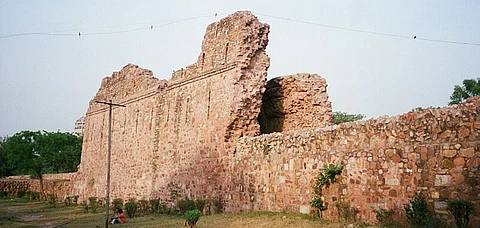
- Destinations
- Experiences
- Stay
- What's new
- Editor’s Picks
- Responsible Tourism
- CampaignsCampaigns
- Subscribe

In a surprising turn of events, the Archaeological Survey of India (ASI) made an accidental discovery during the ongoing renovation work at the prestigious Siri Fort Children's Museum. Approximately three months ago, ASI officials stumbled upon a hidden tunnel-like structure in the Siri Fort area, hinting at the presence of an ancient buried treasure.
The unexpected revelation occurred as the ASI was constructing a temporary pathway to connect the museum's front gate to the main road. Little did they know this endeavour would lead them to a remarkable archaeological find. While labouring on the project, workers noticed an opening in an arched structure, sparking curiosity among the ASI officials.
Structure To Be Preserved In Its Present State
Officials have announced that only the entrance of an arched structure is currently visible, and there are no plans for further excavation to uncover the remaining buried portions. Consequently, the structure will be preserved in its present state and showcased as an exhibit at the museum. These structures are attributed to the Khilji dynasty, which ruled Delhi during the 13th and 14th centuries.
The Archaeological Survey of India (ASI) intends to utilize the structure as an educational exhibit for children who visit the museum. Approximately five to six feet of the structure will be retained for display, allowing students and children to observe how such establishments are discovered during excavation. This initiative aims to educate young visitors about uncovering and comprehending partially buried structures, eliminating the need for extensive excavation.
Established in 2011, the Siri Fort Children's Museum features 30 replicas of renowned monuments and sculptures from India and other countries. These replicas offer visitors a glimpse into the diverse architectural heritage of the nation. Officials have prepared a detailed project report (DPR) outlining plans to introduce approximately 100 additional replicas to enhance the museum's offerings. Currently, development work is underway in accordance with the DPR guidelines, aiming to expand the museum's collection and provide an improved experience for its visitors.
About Siri Fort
Constructed in the 13th century by Alauddin Khilji, Siri Fort stands as an important historical site. Alauddin Khilji, a renowned ruler of the Khilji dynasty, is widely acknowledged as one of the most influential leaders of his era. The fort served as a military garrison, providing a residence for his formidable army. Notably, historians emphasize the significance of Hauz Khas village, an extension of the fort, which played a crucial role in fulfilling the water requirements of the military. This strategic design ensured a reliable water supply for the residents within the fort's vicinity.
Presently, Siri Fort lies in ruins, with only its boundary walls remaining as a testament to its former grandeur. Despite its dilapidated condition, it holds immense historical and cultural value, captivating the interest of archaeologists, historians, and visitors alike.
